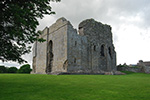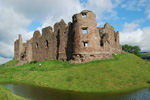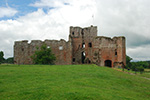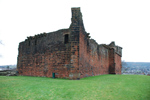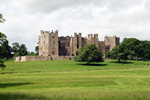History
Barnard Castle was built on a cliff overlooking the River Tees between 1095 and 1125 by Guy de Balliol to protect a strategic crossing point. Guy supported King William III in suppressing a rebellion in 1090 and was granted land in northern England as a reward. The first castle at Barnard was a wooden ringwork castle with a stone gatehouse, surrounded by deep ditches to the south and east. Guy de Balliol died in 1133 without an heir.
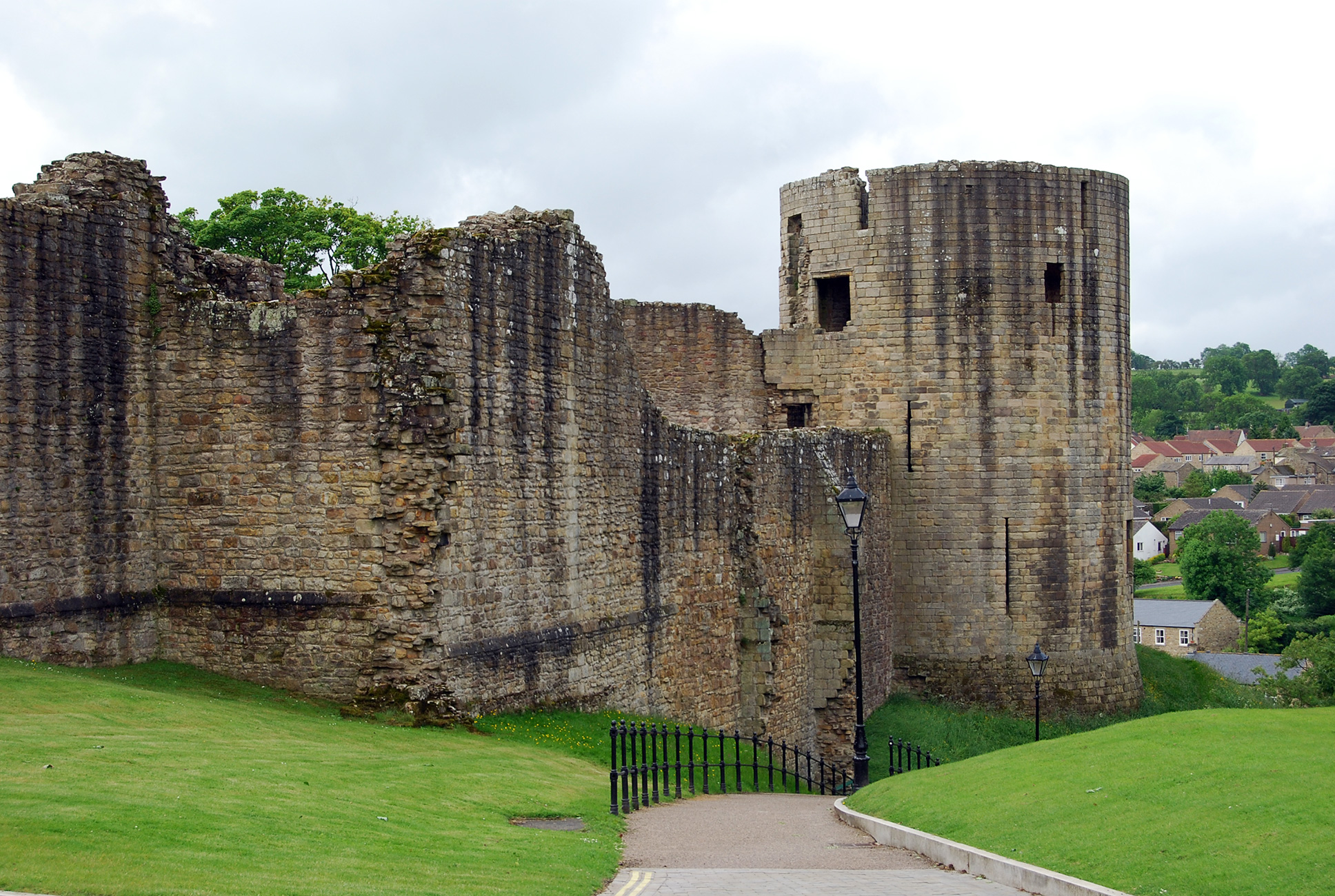
Between 1125 and 1185, Guy's nephew Bernard Balliol and Bernard's son, also named Bernard, rebuilt and extended the castle in stone to become one of the largest castles in northern England. It was from them that the castle got its name. Bernard II added the town ward and middle ward, including the North Gate, Brackenbury Tower, and Constable Tower.
In January 1216, King John stayed at the castle after leading a military campaign against northern rebels. Barnard Castle was also besieged in the summer of 1216 by Alexander II, King of Scotland, but the siege was unsuccessful. During the siege, the Northern Baron, Eustace de Vescy, lord of Warkworth Castle, ventured too close to Barnard Castle and was shot by a crossbowman from the garrison inside the castle and died of his wounds.
The castle remained in the Balliol family until 1296, when the family's most notable decedent, John de Balliol II, was deposed as King of Scotland. After that, Antony Bek, Bishop of Durham, claimed the castle and its lands.
Around 1300, King Edward I of England granted the castle to Guy de Beauchamp, Earl of Warwick. The Earls of Warwick passed it down to their descendants for the next 164 years, through to Richard Neville, Warwick the King-maker. In 1477, during the Wars of the Roses, Richard Plantagenet, Duke of Gloucester, later King Richard III, took possession of the castle through his wife Anne Neville. Richard's "White Boar" emblem can be seen carved on a window soffit in the west wall of the inner bailey. Richard also added the oriel window of the great chamber overlooking the river.
In 1536, Barnard Castle was surrendered to rebels by Constable Robert Bowes during the Pilgrimage of Grace. Robert had success in appearing to support both sides of the cause, becoming one of the rebel leaders only to later revert to the king's service and restore royal control in the area.
In December of 1569, the castle was besieged again for 11 days during the Rising of the North, an effort to replace Queen Elizabeth I with Mary Queen of Scots. The rebels sent 5,000 men to attack the castle, garrisoned by 700-800 troops. After six days, they captured the outer bailey and, soon after that, the town ward. After 11 days, George Bowes surrendered the castle.
In 1630, the castle was sold to Henry Vane, who used some of its stonework to improve his primary residence, Raby Castle. Barnard Castle is now in the care of English Heritage.
Castle Highlights
Barnard Castle is just a ruin today, but the ruins are significant and allow visitors to understand how grand of a castle it was. It can be challenging to find as the town next to the castle is also called Barnard Castle, and the signs showing the way to the castle need to be better placed. If you start at the River Tees, you can't miss the castle.
The best views of the castle are from the river, so spend some time in that area before or after visiting the castle. The castle's most prominent feature is the great tower in the inner ward, known as the Balliol Tower, which is 11 meters in diameter and 12 meters high.
Most of the ruins are contained in the town ward and inner ward. These include the Brackenbury Tower, named after Sir Robert Brackenbury, an important supporter of King Richard III, who served as his constable of the Tower of London and died with King Richard at the Battle of Bosworth in 1485.
Barnard Castle can be explored in a half day, including time along the River Tees. To make a full day of visiting castles, Bowes Castle and Raby Castle are close enough to see on the same day. Ensure Raby Castle is open before you visit, as it is still inhabited and only open to visitors for a limited time during the summer.
Barnard Castle is also haunted.



